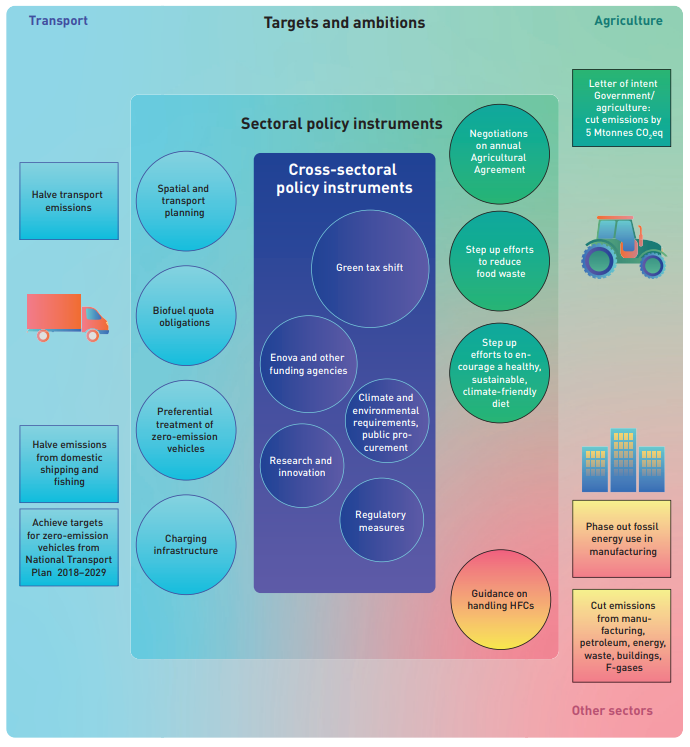Ministry of Climate and Environment, Norway| Source | Download
Norway endorsed climate action plan on January 8, 2021 as part of its commitment towards fulfilling Paris Agreement climate targets and advancing sustainable growth.
In terms of cutting agricultural greenhouse gas (GHG) emissions, the Norwegian Government and agricultural organizations, has signed a joint letter of intent outlining a ten-year plan (2021–2030) to achieve a collective reduction of 5 million ton CO2eq. The Government pledges to provide a supportive framework to enable environmentally responsible choices within the agricultural sector. Key actions outlined in the plan include incorporating climate assessments into annual Agricultural Agreements, and specifying the mitigation impact in budget proposals. Collaborative efforts with agricultural organizations will focus on designing policy instruments aligned with both agricultural and environmental goals. The government will also prioritize improving emission inventories for the agricultural sector. Additionally, the plan explores the potential introduction of a tax on mineral fertilizers to reduce nitrous oxide emissions and aims to enhance the utilization of Norwegian feed resources, including rough grazing.
In terms of sustainable management of forests and land use, forests, acting as carbon sinks, absorb CO2, but land-use changes can lead to substantial emissions. The plan aims to enhance carbon removals in slow-growing northern forests through short-term measures like tending young-growth stands and reducing harvesting. Long-term strategies will contribute to a low-emission society by 2050. To boost carbon removals, the government considers factors at all production stages, promoting existing mitigation measures for forests. Grants for planting, tree breeding, and fertilization are proposed, emphasizing biodiversity and environmental interests. The plan addresses emissions from converting green areas (forest, peatland, agricultural) for construction and infrastructure. Smart spatial management, reusing industrial sites, and avoiding carbon-rich areas are crucial. Spatial planning at the municipal level, taxes on emissions from land-use change, and guidelines for holiday home planning are proposed. The plan also tackles emissions from converting peatland to agricultural land and peat extraction from forests.
Fig. | Policy instruments to reduce emissions and enhance removals in agriculture.



